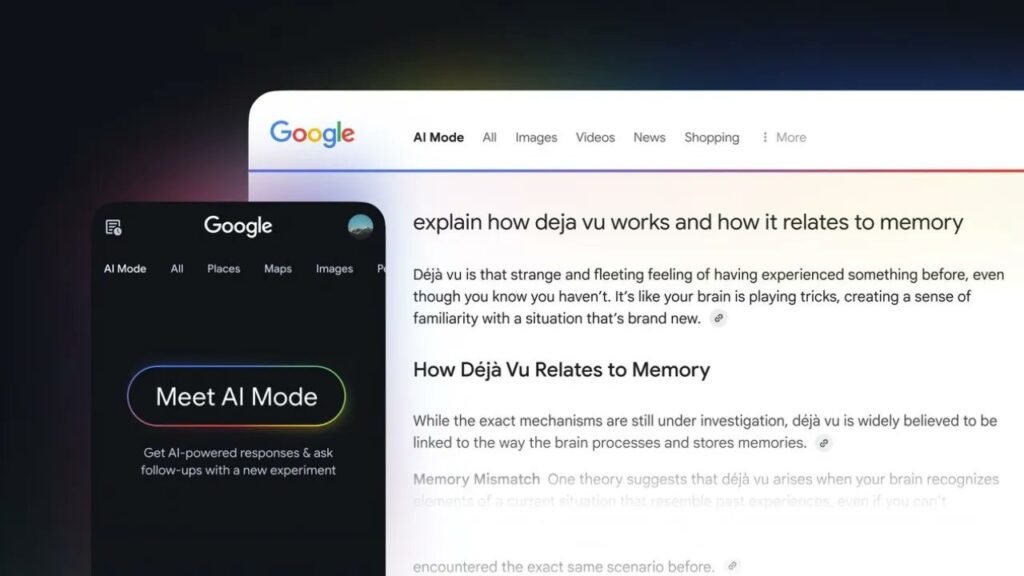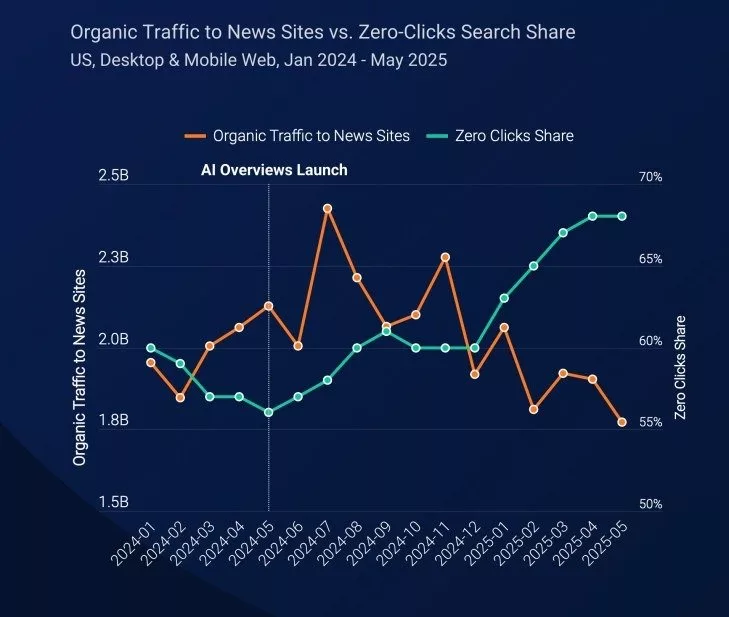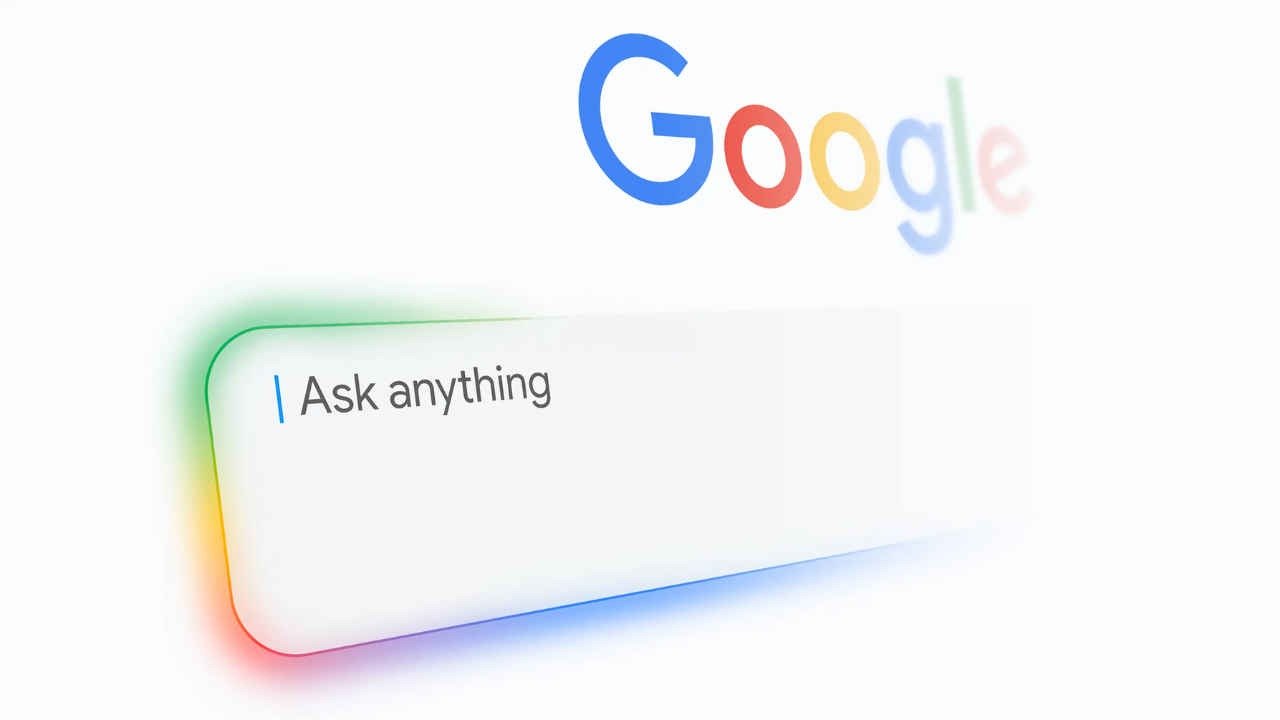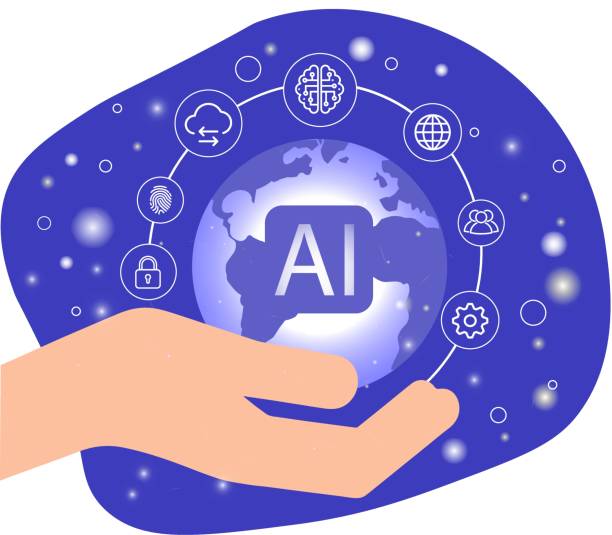Google Rejects Reports of AI Reducing Website Traffic
Google, the global search giant, has unequivocally rejected recent reports claiming that its AI-powered search features have significantly reduced website traffic. The company asserts that the overall volume of organic clicks to websites via Google Search has remained “largely consistent” compared to last year, with a slight increase in the quality of these clicks. This statement comes amidst growing concerns among many publishers and webmasters about the increasing impact of AI on their business models, with some claiming that recent Google changes have driven fewer visitors to their websites.
Liz Reid, Google’s VP and Head of Search, addressed this issue in a post on the company’s official blog. She emphasized that Google’s internal data contradicts third-party reports indicating a sharp decline in traffic. According to Reid, these external reports are often based on “flawed methodologies, limited samples, or traffic shifts that predate the launch of AI-powered capabilities,” lacking sufficient accuracy and comprehensiveness. Google’s statements are, in essence, an attempt to calm increasing concerns within the web ecosystem, where it is predicted that AI, especially in providing summaries and direct answers, will make users less reliant on visiting source sites.
Google’s rebuttal comes at a time when users and content creators are increasingly witnessing a shift in how they interact with search results. With the expansion of direct AI-powered answers, particularly through the “AI Overviews” feature, many user questions can now be answered directly on the search results page without requiring clicks on external links. This has raised concerns about reduced inbound traffic to websites, as users no longer feel the need to visit the original source for their information. On the other hand, Google believes that these summaries and answers can actually act as a “traffic farmer,” guiding users towards deeper and more detailed information on websites.
However, this argument is not convincing for many publishers. They believe that even if links are displayed in AI Overviews, the click-through rate on them is significantly lower than on links shown in traditional search results. This situation can directly and negatively impact advertising revenue, which is the lifeblood of many websites. The divergence in views between Google and publishers indicates a potential crisis in the relationship between search engines and content creators, a crisis that requires new solutions and greater transparency from both sides.
Changing Search Patterns and the Role of AI
Although Google has not provided specific and precise statistics to prove its claim of stable traffic, Liz Reid points out an important detail: “Changes in user behavior have led to a decrease in traffic for some websites and an increase for others.” This statement indicates that even Google itself acknowledges that AI and new search features have altered traffic patterns, even if it assesses the overall click volume as “stable.” These changes could mean a shift in traffic from one type of content or website to another, rather than an overall decrease. For instance, websites offering deep analytical content or personal experiences might perform better compared to purely news or general informational sites.
Google’s search engine has undergone fundamental redesigns in recent years to provide more direct and comprehensive answers to user queries. This shift in approach has culminated with the introduction of “AI Overviews,” where a summary of search-related information, aided by AI, is displayed at the top of the results page. Furthermore, for some searches, direct interaction with Google’s chatbot is also available to users, further transforming the search experience. While this approach is significantly more efficient for users, it creates challenges for web publishers, as information becomes accessible without needing to leave Google.
Google believes that these transformations do not necessarily signify a “serious upheaval of the search structure.” Instead, the company contends that users have naturally gravitated towards other platforms to begin their searches. For example, many people now start their searches in forums, social media networks like TikTok and Instagram for visual content, or video and podcast platforms for audio content. This indicates that Google.com is no longer the sole or even primary starting point for all online searches, and the competition for user attention has expanded to various platforms. This trend is particularly evident among younger generations and emphasizes that content marketing strategies must extend beyond merely optimizing for Google.
Reid writes on this matter: “People are increasingly turning to sites where they can hear authentic voices and first-hand experiences.” This Google perspective suggests that authoritative content based on personal experience has gained increasing importance in the eyes of users. This shift in user prioritization encourages publishers to focus on producing content that offers not only accurate information but also unique perspectives and experiences to attract and retain new audiences. This means moving towards deeper, more analytical, and personalized content that AI is not yet fully capable of reproducing.

Google Speaks of Increased “Click Quality”
In line with this shift in approach, Google has also attempted to redefine “traffic.” Instead of solely focusing on the number of clicks, the company now encourages publishers to pay more attention to “click quality.” Google claims that the average quality of clicks has increased, and users are performing “higher-quality clicks” compared to last year. Although the company has not specified the exact extent of this increase, “high-quality clicks” refer to instances where a user, after clicking on a search result link and entering a website, fully reads its content or engages with it more deeply, rather than immediately leaving the page. This focus on quality, rather than quantity, signifies the maturation of the web ecosystem, where the ultimate goal is to attract visitors who are genuinely interested in the content.
This shift in focus from Google could mean that even with a potential decrease in raw click numbers, visitors arriving at sites via Google search are more valuable and engaged. This type of visitor is more likely to convert into a customer, loyal reader, or permanent user. Therefore, although the number of visitors might have decreased, the impact and utility of each visitor for the website have increased. This perspective could be positive news for websites focused on subscription-based revenue models, product sales, or service provision, as the quality of interaction takes precedence over the quantity of clicks.
Google also attempts to present AI not as a threat, but as an opportunity to increase publishers’ visibility. Liz Reid notes: “In AI Overviews, users now see more links than before. More questions and more links mean more opportunities for sites to appear and receive clicks.” This argument is based on the idea that even if part of the answer is directly provided by AI, the presence of multiple links to original sources in the AI Overview creates new opportunities to direct users to websites. These new opportunities require new SEO strategies that emphasize optimizing for presence in AI Overviews and providing content focused on answering more complex questions.
This perspective reflects Google’s effort to balance providing quick and complete answers to users while preserving the vital role of websites as primary information sources. However, publishers remain concerned about whether these links will be effective enough to compensate for the traffic reduction caused by direct AI answers. The main challenge is that the click-through rate (CTR) for links within an AI Overview might be significantly lower than for standard links in search results, as users often receive their required answer in the initial summary itself.
Challenges Facing Publishers and Conflicting Statistics
Despite Google’s optimism, some independent reports paint a different picture. According to a recent Similarweb study published by TechCrunch, since the introduction of the “AI Overviews” feature, the number of searches that resulted in zero clicks on news websites has increased from 56% to 69%. This statistic indicates a serious concern for news websites and content creators whose revenue directly depends on traffic and user clicks. The rise in “zero-click searches” means a reduction in opportunities for earning revenue through advertising or attracting subscribers for these platforms. This trend could potentially impact the future of online journalism and high-quality content production, as it challenges existing revenue models.
This statistical contradiction between Google’s internal data and third-party reports highlights the need for greater transparency from Google. Without providing precise and verifiable statistics, it is difficult to definitively judge the true impact of AI on website traffic. Publishers and SEO professionals require credible data to adjust their strategies to the new search landscape and ensure the survival of their online businesses. This transparency could include segmenting traffic data based on search type (with and without AI Overview) and providing more precise metrics for “click quality.”
Google seems aware of this trend and the challenges faced by publishers. The company has recently introduced products for publishers to help them offset potential traffic reductions with alternative methods such as micro-payments for content access or attracting audiences for newsletters. These measures, although seemingly supportive, are themselves an implicit acknowledgment that the traditional website traffic-based revenue model is under pressure from AI-driven changes. This new approach pushes publishers towards diversifying their revenue streams and reducing their sole reliance on search traffic.
Ultimately, the debate over AI’s impact on website traffic continues. While Google insists that the situation is “largely consistent” and click quality has improved, external evidence suggests that publishers have been significantly affected. This transformation pushes webmasters towards innovation and finding new ways to deliver value to users and attract them, beyond merely relying on search engine traffic. The future of the web will undoubtedly require adaptability and flexibility from all its players, with an emphasis on producing high-quality, authoritative, and multifaceted content that can stand out amidst the wealth of information and attract a genuine audience.





